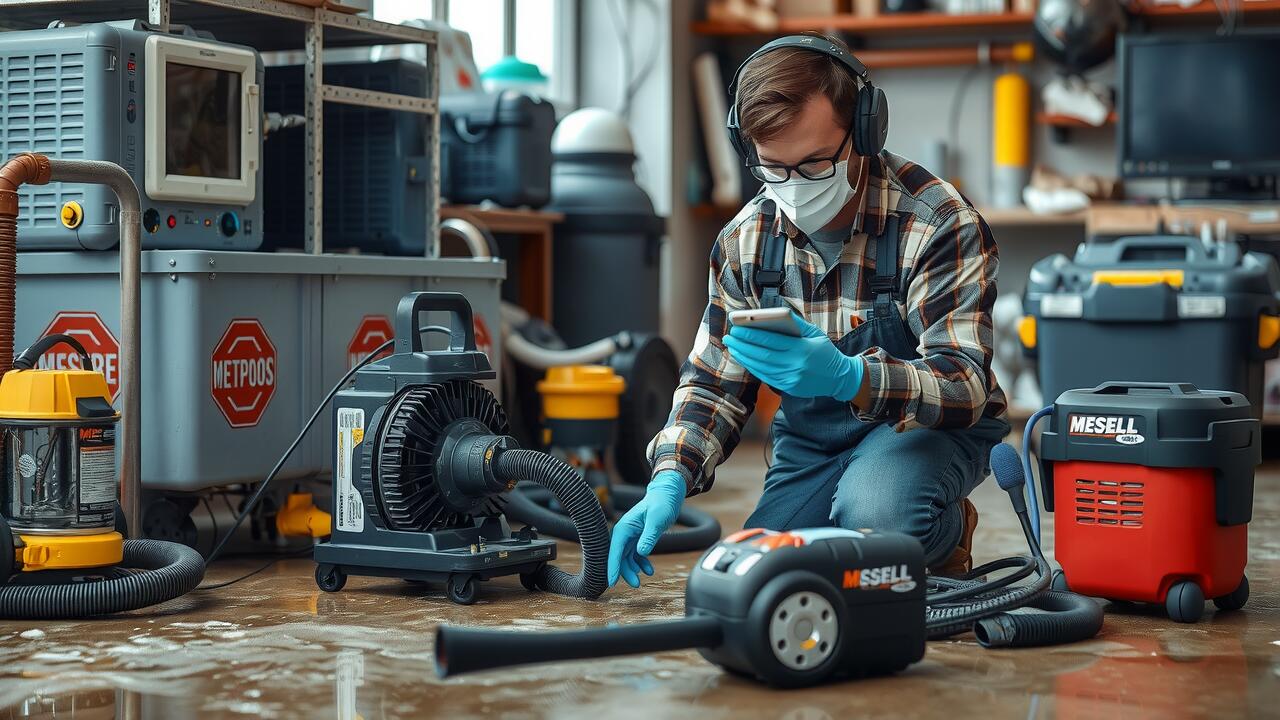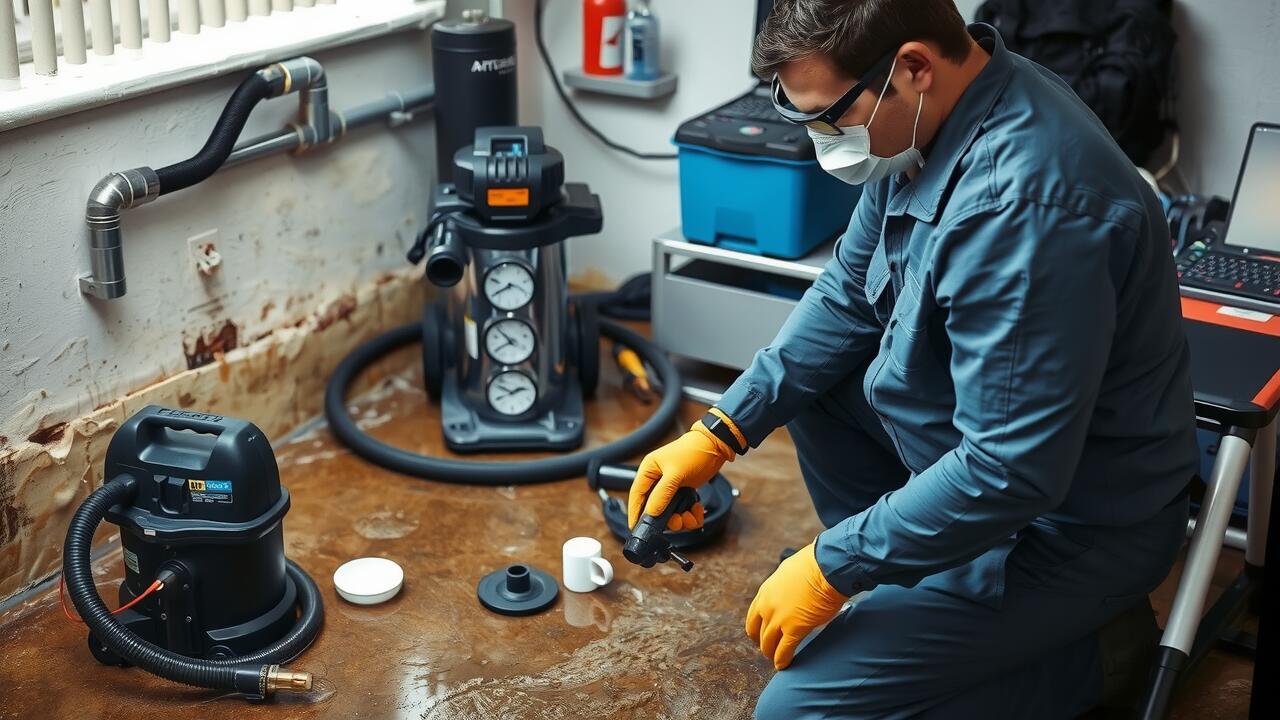
Pumping Solutions for Sewage Removal
When dealing with sewage backup emergencies, effective pumping solutions are essential for minimizing damage and ensuring safety. Various types of pumps are available, each suited for different scenarios. A submersible sewage pump is often favored for its efficiency in moving large volumes of wastewater, while a diaphragm pump can handle solid waste materials more effectively. Understanding the specific conditions of your situation will help guide you towards selecting the most appropriate tool for the task.
The urgency of sewage backup restoration in Pickerington, Ohio, dictates the need for prompt action. Hiring a professional service that specializes in sewage removal can provide access to powerful equipment and expertise. Professionals are trained to assess the extent of the backup and will use appropriate methods to safely extract sewage. This not only speeds up the cleanup process but also reduces the risk of health hazards associated with untreated wastewater.
Choosing the Right Pump for Your Needs
When selecting a pump for sewage backup restoration in Pickerington, Ohio, it’s essential to consider the specific requirements of your situation. Submersible pumps are often preferred for this type of job due to their ability to operate underwater. Look for units that are designed for handling solids, as sewage can contain debris that could clog standard pumps. Also, pay attention to the pump’s horsepower and flow rate to ensure it is capable of managing the volume of water you need to remove efficiently.
Portable pump options can also be effective for smaller incidents or temporary setups, offering flexibility and ease of use. Additionally, ensure the pump you select has a reliable backup power source in case of electricity outages. Assessing the potential for flooded areas and understanding the specifications of various models will help you make the best choice for efficient sewage backup restoration in Pickerington, Ohio.
Decontamination Processes
Decontaminating areas affected by sewage backup is crucial for ensuring a safe and healthy environment. First, remove any contaminated materials such as carpeting, insulation, and furniture that cannot be adequately cleaned. After removal, thoroughly clean all surfaces with a strong disinfectant specifically designed to eliminate pathogens found in sewage. This step reduces the risk of diseases and fosters a safer living environment.
Following the initial cleaning, it is important to disinfect the area to further eradicate harmful bacteria and viruses. Use industrial-grade disinfectants that are approved for sewage cleanup. Make sure to wear appropriate personal protective equipment throughout the process. For those seeking professional help, organizations that specialize in Sewage Backup Restoration in Pickerington, Ohio, can provide expertise and ensure comprehensive decontamination. Regular monitoring of the area after cleanup is essential to ensure that no residual hazards remain.
Best Practices for Sanitizing Affected Areas
Cleaning and sanitizing areas affected by sewage backup is critical to ensure the health and safety of occupants. Start by removing any contaminated materials such as carpets, upholstery, and drywall. Use protective gear including gloves, masks, and goggles to minimize exposure to harmful pathogens. After removal, thoroughly clean the remaining surfaces with a mixture of hot water and a sanitizing solution. Pay attention to corners and crevices where bacteria can thrive.
After initial cleaning, proceed with disinfection. Utilize EPA-approved disinfectants specifically formulated for sewage spills. Ensure to follow the manufacturer’s instructions for proper dilution and application. Allow the disinfectant to remain on surfaces for the recommended contact time to effectively eliminate harmful microorganisms. For those in need of professional help, look for services specializing in Sewage Backup Restoration in Pickerington, Ohio, to ensure a thorough and effective cleanup.
Preventive Measures for Future Incidents
To minimize the risk of sewage backups, regular maintenance of sewer systems is crucial. Homeowners should schedule routine inspections to identify potential blockages or infrastructure issues. Clearing debris from gutters and landscaping that can impede drainage plays an essential role in preventing overflow. Investing in professional services for sewage backup restoration in Pickerington, Ohio may also enhance long-term protection against future incidents.
Additionally, installing backflow prevention devices can safeguard homes from unexpected sewage floods. These devices ensure that waste flows away from your property, not into it. Properly managing waste disposal practices is equally important; items such as grease, oils, and non-biodegradable products can lead to clogs. Educating family members about proper waste disposal can significantly reduce the likelihood of future problems.
Regular Maintenance Tips for Sewer Systems
Regular maintenance of sewer systems is crucial to prevent sewage backups. Homeowners should routinely inspect their plumbing systems for any signs of wear or damage. Clearing out grease, hair, and foreign objects from drains promotes smooth water flow. Additionally, utilizing enzyme-based drain cleaners can help break down buildup in pipes, reducing the likelihood of blockages. Keeping a detailed maintenance schedule aids in tracking any issues that may arise over time.
Engaging professional services for regular inspections is recommended. These experts can identify potential vulnerabilities within the system before they escalate into problems. For those living in communities like Pickerington, Ohio, understanding local regulations regarding sewer maintenance is essential. Proactive measures taken today can significantly reduce the chances of needing Sewage Backup Restoration in Pickerington, Ohio, allowing residents peace of mind for the future.
FAQS
What should I do first when faced with a sewage backup?
The first step is to ensure your safety by avoiding contact with the sewage. If it’s safe to do so, turn off electricity in the affected area and call a professional plumber or sewage removal service immediately.
How do I choose the right pump for sewage removal?
Consider the type of sewage you are dealing with, the volume of water, and the distance it needs to be pumped. Submersible pumps are typically effective for residential sewage backup, while larger pumps may be required for commercial situations.
What are the best practices for sanitizing areas affected by sewage?
After removing the sewage, thoroughly clean and disinfect all surfaces using a mixture of water and detergent, followed by a disinfectant solution. Ensure proper ventilation and wear protective gear to safeguard against harmful pathogens.
How can I prevent sewage backups in the future?
Regular maintenance of your sewer system is key. This includes routine inspections, clearing out tree roots, avoiding flushing inappropriate items, and ensuring your plumbing is up to code.
Is it safe to handle sewage backup myself?
It is generally not recommended to handle sewage backup without professional help due to health risks. If you must handle it, ensure you have proper protective gear, including gloves, masks, and boots, and follow safety procedures closely.
